Stewardship at home focuses on best practices for co-existing with wildlife. Understanding local species, planning ahead for having wildlife visit our space, and knowing what to do if conflicts occur will help us plan ahead and prepare for living alongside wildlife. Living in Washington means living with and alongside wildlife, from mammals big and small, to birds, reptiles, and insects. Even if you do not live near water, your actions impact fish and wildlife that rely on local waterways.
When we co-exist with wildlife, it's important to think about how our actions can impact our wild neighbors. Support local wildlife by:
- Trimming hedges in the fall instead of late winter when birds start nesting
- Leaving more shrubs untrimmed to create more shelter for wildlife
- Rake pathways but leave the leaves in natural spaces to provide winter habitat

Stewardship actions
Increase biodiversity
Biodiversity is the full range of life in all its forms and is essential for human life. Biodiversity includes habitats in which life occurs, the ways that species (plants, animals, fungi, etc.) and habitats interact with each other.
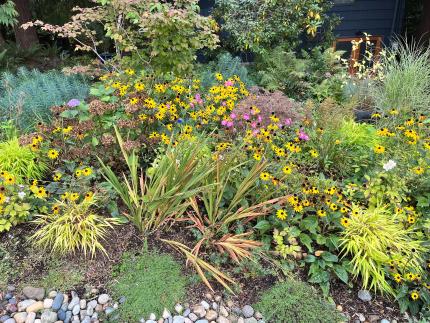
Biodiversity has aesthetic, cultural, educational, and economic value. Retaining and restoring wildlife habitat provides ecological services important to humans and communities, such as:
- improved water quality,
- improved water storage and availability,
- buffering and control of storm water and floods,
- pollination,
- food production,
- soil fertility,
- pest control, and
- the reduction of carbon dioxide (a greenhouse gas that contributes to climate change).
Washington is experiencing unprecedented biodiversity loss. Human population growth and climate change are two of the driving factors for landscape changes affecting biodiversity in Washington.
There are 268 Species of Greatest Conservation Need (SGCN) identified in Washington’s State Wildlife Action Plan. These include species that are state or federally listed as threatened, endangered, or sensitive and other species of conservation need throughout the state.
You can help protect and support these species by promoting biodiversity where you live and play.
- Use native plants: When planting, choose native species and try to diversify the plants in any area. Native plants support more wildlife species than non-native plants, and a diversity of plants is more attractive to wildlife than many of the same plant. To find the native plants best suited for your area, contact your county Conservation District or the Washington Native Plant Society chapter near you.
- Avoid pesticides: Insect diversity is the base of species diversity, and insects are an important part of the food chain. Avoid pesticides in and outside your home to protect biodiversity and our waterways. Instead, help create a balanced environment that relies on natural predators of pest insects.
- Use varied vegetation: Create natural spaces that include all layers of vegetation, from groundcover to tree canopy.
- Eliminate invasive plants: Work to eliminate invasive plant species. Invasive plants dominate the resources native plants need to survive, pushing or choking them out. Native wildlife species often can’t get what they need from invasive plants, so they are less likely to live in an area dominated by invasive species. To find out what is invasive in your area, contact your local Noxious Weed Council.

Reduce lawn space
Tired of mowing the lawn? Take the plunge and replace your grass lawn with a pollinator meadow of native wildflowers, or a collection of native ground covers. Meadows require less work to maintain and less water to grow. They also add biodiversity to landscapes, supporting pollinators and many other wildlife species.
If a wildflower meadow doesn’t work for you, consider planting native grasses like poverty oatgrass and sand sedge, or low growing groundcovers such as Kinnikinnick, beach strawberry, western trillium, and wood sorrel. These native plants don’t need mowing!
Most traditional lawns are made of a single grass species not native to our region and therefore support very few native wildlife species. Making the switch will save you work and money and will “bee” more appreciated by Washington wildlife.
Find resources on plants for your part of the state and ways to get started making the switch by reaching out to your local conservation district, or using the resources provided by the Washington Native Plant Society. Use the National Seed Network to find a retailer near you. The Center for Nature Lands Management has seeds available in Western Washington.

Be sure to manage invasive species before you plant and continue to pull invasive weeds so they don’t repopulate or spread to nearby green spaces. If needed, you can mow wildflower meadows in the late summer or fall to keep brush levels safely under control when there is risk of wildfire.
Eastern Washington native plant list
Wildflowers and grasses
- Aspen daisy (Erigeron speciosus)
- Badlands mule’s ear (Scabrethia scabra)
- Blanket flower (Gaillardia aristata)
- Beardtongue (Penstemon serrulatus)
- Cusick hyssop (Agastache cusickii)
- Golden columbine (Aquilegia chrysantha)
- James buckwheat (Eriogonum jamesii)
- Pinleaf penstemon (Penstemon pinifolius)
- Rocky Mnt. penstemon (Penstemon strictus)
- Ross’ avens (Geum rossii)
- Seaside daisy (Erigeron glaucus)
- Short-stem buckwheat (Eriogonum Brevicaule)
- Sundancer daisy (Hymenoxys acaulis)
- Thurber’s cinquefoil (Potentilla Thurberi)
- Tufted evening primrose (Oenothera caespitosa)
- Yellow penstemon (Penstemon confertus)
Groundcovers
- Coastal strawberry (Fragaria chiloensis)
- Kinnickinnick (Arctostaphylos uva-ursi)
- Western clematis (Clematis ligusticifolia)
- Wild ginger (Asarum caudatum)
- Wild or Blue-leaved strawberry (Fragaria virginiana)
- Wood strawberry (Fragaria vesca)
Western Washington native plant list
Wildflowers
- Bare-stemmed biscuit-root (Lomatium nudicaule)
- Bluebell of Scotland (Campanula rotundifolia)River bank lupin (lupine rivularis)
- Canada goldenrod (Solidago lepida variety: salebrosa)
- Common wooly sunflower (Eriophyllum lanatum)
- Farwell-to-Spring (Clarkia amoena variety: lindleyi)
- Globe Gilia (Gilia capitata)
- Pearly everlasting (Anaphalis maragritacea)
- Sea-pink (Armeria maritima)
- Showy daisy (Erigeron speciosus)
- Sicklekeel lupine (Lupine albicaulis)
Groundcovers
- Coastal strawberry (Fragaria chiloensis)
- Deer fern (Blechnum spicant)
- Kinnickinnick (Arctostaphylos uva-ursi)
- Wild ginger (Asarum caudatum)
- Wild or Blue-leaved strawberry (Fragaria virginiana)
- Wood strawberry (Fragaria vesca)
- Wood sorrel (Oxalis oregana)
Skip the cleanup
Plant litter, including fallen leaves and dead plants, creates important wildlife habitat for insects, amphibians, birds, and small mammals. Leaf and plant litter also act as a natural fertilizer and provide nutrients to the soil.
Stems from the past season’s flowers and shrubs provide nesting space and shelter for native cavity-seeking insects. Fallen logs support biodiversity by creating shelter, food, and space for many species. Save yourself some work this autumn and leave the leaves for local wildlife!
Decrease light pollution
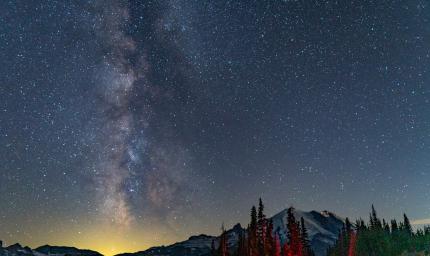
Plants and animals depend on the natural rhythm of daylight and darkness to help them survive. Darkness can provide a safe time to be active when fewer predators are awake, or help wildlife conceal themselves while they are asleep.
The artificial light at night caused by humans is one of the most impactful changes we have made to the natural environment. We can help wildlife navigate the night more naturally by turning off unnecessary lights outdoors overnight.
- Dimmers, timers, and motion sensors can turn lights on only when needed.
- Capping lights reduces light going up into the sky.
- Using yellow or orange warm-toned bulbs can reduce outdoor lightings’ impact on wildlife
DID YOU KNOW? 20–50% of outdoor residential lighting is lost to the night sky due to poor shielding alone. Learn more about reducing light pollution at your home or business. Use the checklist to become a dark sky-friendly home.
Mitigate impacts of climate change
Supporting wildlife habitat where we live, work, and play is essential for healthy ecosystems in a changing world. Climate change is impacting outdoor recreation while also increasing pressures on local wildlife and biodiversity is declining worldwide, but there are ways we can help in our own spaces as shown in this climate resilience guide.
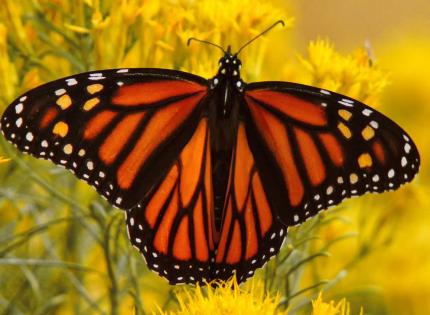
Pacific Northwest observations have shown significant changes over the past century as a result of natural climate variability and greenhouse gas emissions, resulting in warmer air temperatures and variable precipitation patterns. Air temperatures are projected to continue increasing over the next century, while precipitation will remain variable but largely exhibit summer declines. These impacts to Washington state are projected to lead to a future with significantly altered snowpack, streamflow patterns, water availability, wildfire risk, ocean pH, and sea levels, with various impacts on habitats and their associated species in Washington.
Impacts of these changes include:
- Plant blooming times shifting, which causes mismatches between animals' behavior and their habitat needs.
- Plant species location shifts, which impact wildlife that depends on them, forcing animal movement through human areas.
- Wildlife range shifts caused by temperature changes can bring species into contact with new predators, increase competition for resources, and prompt interactions between unfamiliar species.
- Climate changes can increase flooding, fires, drought, and extreme weather events.
- Warming can cause birds to return north to their breeding grounds too early, when there is not enough food to support nestlings.
- Forest fires and drought can reduce food resources, destroy habitat, and reduce access to water.
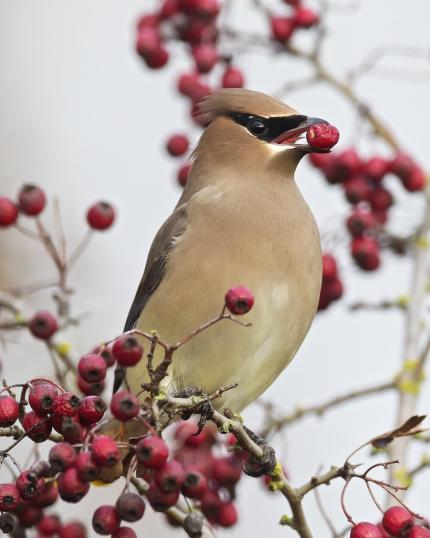
Wildlife displacement
All these factors can lead to wildlife displacement. Displacement occurs when wildlife is forced to leave their traditional territories due to forces outside their control. Natural history traits can make some species more vulnerable than others; the more specialized the species, the more vulnerable they are to climate change.
As the climate becomes more unpredictable, we can help by diversifying our natural spaces. Year-round foliage provides cover for wildlife in all weather conditions. Choose wildflowers that bloom across different months and plants that produce fruits to provide year-round food for wildlife. Planting a diversity of native plants can provide fruits, seeds, nectar, and pollen for wildlife, as well as the most essential part of birds’ diets - insects.
Extreme heat
There are many ways to help wildlife in extreme heat. Provide water sources that are varied and readily available so that wildlife doesn’t have to use their energy finding hydration. Shade is also essential; help by providing shelter from the sun through plants at all levels, from groundcover to tree canopy.
- Birdbaths in the shade keep water temps down, preserve water for the birds, and protect smaller birds from predators. Multiple baths can create safe areas for smaller birds and reduce competition.
- Wildlife such as bats cannot use small water sources like bird baths since they will not land to drink. If you can, keep water sources like horse troughs filled to the top so that bats and other creatures can access them.
- Insects need water too! Especially in extreme heat. You can create puddling areas using shallow dishes with stones inside so that bees and other insects can access water without risk of drowning.
- When water is scarce, animals get desperate. Make sure all larger water sources have escapes for insects and other small animals that can become trapped. Either create slopped entrances, use aquatic vegetation, or use wildlife escape ramps to help wildlife not become trapped and drown.
- Bird and bat houses can overheat in extreme weather. Build houses with 1” planks to provide insulation, and in extreme weather consider adding a sunshade that can be pulled down. You can also place bird and bat houses under a roof overhang or in partial shade. All houses should be built with ventilation holes or slots.
Extreme cold
In extreme cold, shelter is essential for wildlife. In the fall, leave your leaves on the ground or push off paths into natural spaces. Leaves, sticks, logs, and rock piles are life-saving cover for many of the smallest wildlife species, such insects and slugs, mammals, reptiles, and amphibians. In winter, stay out of caves and other places wildlife might be hibernating to help them preserve essential energy. In the spring, skip mowing the lawn in the earliest months when blooms scare, so pollinators have more food.
Think about what is downstream
Whether you live a couple feet or a couple miles from the nearest lake, stream, river, or sound, you are impacting salmon habitat. Everything that runs off into storm drains has the potential to wash through salmon habitat. Fertilizers, pesticides, and chemicals that end up in the water harm young salmon, and water waste reduces the river and creek levels where salmon swim and spawn.
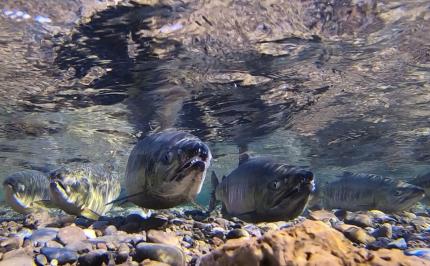
The choices you make in your garden or yard can help!
- Research before you plant. Choose native plants that are right for the space where you are growing them. Matching water and sun needs to what is available will mean less watering by you.
- Group plants with similar water needs together so you only water the ones that need it.
- By watering deeply but infrequently when plants are new, you encourage native plants to grow deep roots, requiring less watering across the life of the plant.
- Avoid pesticides and instead rely on natural pest control such as birds, bats, and beneficial bugs.
- Replace pavement with porous materials that allow water to filter naturally through the ground.
- Plant trees and surround them with more plants to keep water in the ground instead of creating more run off.
Use the Gardening for Salmon guide and plant list to create wildlife habitats that benefits all of Washington’s waterways!
Get students involved in learning with these educational resources.
Avoid Using Pesticides
Toxic pest control methods threaten wildlife species that aren't the target of the poison.
Rodent poison, also known as rodenticide, kills slowly. Research shows that some poisoned animals can live between four days and two weeks. During this time, poisoned rodents may continue to ingest the rodenticide, making them increasingly toxic until they finally succumb to the poison. As they slowly fall ill, the rodenticides makes rodents sluggish and turns them into an easy meal for hungry carnivores, who are then susceptible to secondary poisoning.
Secondary rodenticide poisoning is a common cause of death in many carnivore species and can threaten vulnerable species like the spotted owl You can help reduce this threat to wildlife by using alternative pest control methods in and around your home.
Non-toxic pest control options include snap and electrical traps, but the best long-term pest control is to identify and eliminate the things attracting pests to your home. Rodent attractants like food, bedding materials, and hiding places are common culprits. Please also avoid using glue or sticky traps as they can harm non-target species, and animals caught in these traps often suffer a slow death of starvation and dehydration.
Coexistence
Coexisting with wildlife and keeping ourselves, communities, and wildlife safe requires planning ahead and working to avoid conflict by reducing attractants around your space.
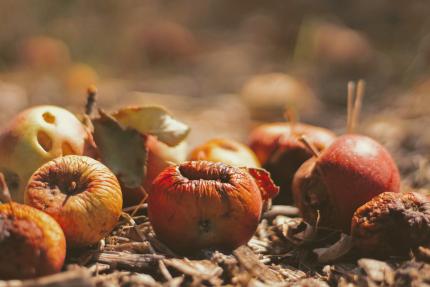
Remove attractants
Clean up excess pet and livestock food immediately, and feed cats and dogs indoors. Secure trash cans where wildlife cannot access it and wait until trash day to move it outdoors. If you grow food in the garden or keep fruit trees, harvest crops as soon as possible to prevent attracting wildlife. Rotten fruit is especially attractive to rodents and other wildlife. Each year, plan to survey your garden or orchard space and patch any new holes, rotting boards, and other gaps and crevices before cold weather drives wildlife into our spaces.
We can’t control the wildlife who visit our spaces, but we can understand what attracts them. When providing habitat for smaller animals such as small mammals and songbirds, remember who their predators are and recognize that these predators may follow. For example, providing feeders for songbirds can attract birds of prey, especially if the feeders are out in the open. WDFW recommends not feeding animals such as deer, turkeys, and other wildlife that could attract large carnivores to your community.
Learning the behaviors of wildlife common to your area is a great way to plan and avoid conflict. The Living with Wildlife pages can help you better understand and coexist with your wild neighbors.
Coyotes
Coyotes (Canis latrans) are present across nearly all of Washington, from the shrubsteppe to the alpine, as well as many urban and suburban areas. They are common in many larger, wooded green spaces and parks within cities including Seattle and Spokane.
Coyotes are most active at night and during the early-morning and evening but can be seen during all hours of the day. Their diet is diverse and adaptable, including everything from rabbits and small rodents to garbage, birdseed, and fruit from trees.
Coyotes can also benefit humans and ecosystems by helping control populations of mice, rats, voles, moles, and rabbits. Get more tips on coexisting with coyotes at our blog. Visit our coyote webpage to learn tips to avoid conflicts with coyotes. Reports of coyotes in Seattle or nearby suburban areas can be sent to community science programs such as Woodland Park Zoo’s Carnivore Spotter.
Owls
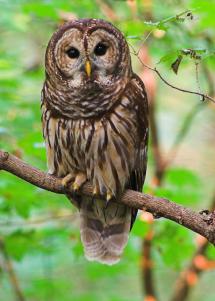
“Hoo-hoo-hoo" “Who-cooks-for-you?”
Barred owls (Strix varia) are becoming a common sight in urban areas across Washington. With their hooked bills, sharp talons, and silent feathers, owls prey on rats, rabbits, and other small mammals.
Barred owls are 20 inches tall with a wingspan of up to 48 inches. Barred owls do not have dark eyes that appear fully black and sport a horizontal barring pattern on their neck and breast, which becomes vertical on their bellies.
You are more likely to hear than see an owl. Barred owls give a distinctive: hoo-hoo-hoo, hoo, hoo-hoohoo-hoo-a-aw. That sounds like they are saying “who-cooks-for-you, who-cooks for-you-a-all,” while ending with a descending note. Learn more about Washington owls at our Living with Wildlife pages.
River otters
River otters (Lontra canadensis) are active year-round. While they are rarely seen, river otters are quite common throughout Washington in ponds, lakes, rivers, sloughs, estuaries, bays, and in open waters along the coast.
- River otters have two sets of eyelids! One set, called a nictitating membrane, is clear, allowing them to open their eyes in icy water without damaging their eyes.
- Otters have very dense undercoats that trap warm air close to their bodies, while their outer fur repels water to keep them dry.
- When ponds and lake freeze over, they can use the air pockets between the ice and the water to continue to hunt and forage.
- Between March and May, female river otters give birth to two to four pups.
Did you know? River otters can smell concentrations of fish through water and will follow stream and waterways to the source. Learn to live alongside river otters at our Living with Wildlife pages.
Opossums
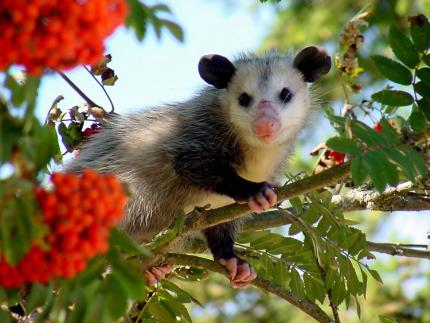
Playing possum? It takes more commitment than you might think. Opossums have a top speed of four miles per hour - not great for escaping predators. If they can’t get away, they will play dead by falling on their side, curling their body in, opening their mouths and drooling, and pooping where they lay. Opossums will stay in this position for several minutes to several hours, and while they appear catatonic, they are in fact fully alert. Once danger seems to have passed, opossums will first wiggle their ears to listen for threats before lifting their heads and moving on. More opossum facts:
- They are smarter than you may know; scientists place them between dogs and pigs in terms of intelligence.
- The Virginia opossum (Didelphis virginiana) is North America’s only marsupial, which are mammals that carry their babies in pouches.
- The Virginia opossum was first brought to Washington in the early 1900s, probably as pets.
- They are primarily nocturnal and solitary animals.
Learn about living alongside opossums and how they benefit our environments at our Living with Wildlife pages.
Salamanders
Sometimes referred to as "mole salamanders", salamanders like the long-toed (Ambystoma macrodactylum) and northwestern salamanders (Ambystoma gracile) escape freezing winter temperatures by using burrows dug by small mammals. These burrows allow them to remain active underground, where temperatures are warmer. By staying below the frost line, salamanders can avoid freezing and hang out comfortably until spring, when it is warm enough to emerge.
Spiders
Did you know that a single spider can eat up to 2,000 insects a year? While you may not want them indoors, spiders do amazing things for us!
Orb weaving spiders, such as the cross orb weaver (Araneus diadematus) are garden spiders that feed on small insects, including wasps and invasive stink bugs. They sit upside down in the middle of their webs on the side where they are most protected from predators by trees and plants. When startled, orb-weavers will drop to the ground and hide in the understory.
Turkeys
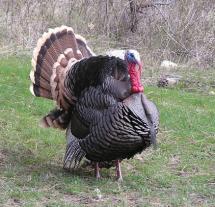
Turkey, turkey, turkey! Have you seen wild turkeys in your community? For some Washingtonians it’s a seasonal occurrence. Here are a few tips for living alongside turkeys.
Don’t feed turkeys! Feeding wildlife like turkeys leads to habituation, which means wild turkeys lose their natural fear of people through repeated interactions. Feeding turkeys leads to conflicts such as:
- Aggressive encounters between turkeys and people, children, or domestic pets;
- Increased likelihood of predators entering neighborhoods, and
- Turkey health problems from poor diet and disease.
Bird feeders attract big birds too! Bring in feeders when turkeys are present to avoid uninvited guests. Instead of feeding wild turkeys this fall, observe or photograph them as they pass through. Learn how to humanely deter problem turkeys on our Living with Wildlife page.
Slugs
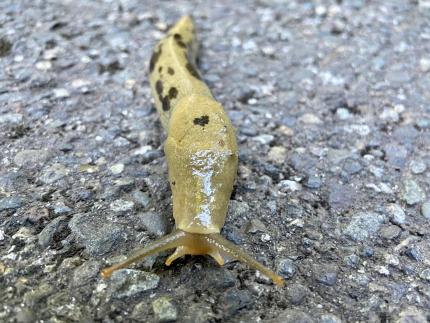
Dark and wet weather is perfect for spotting slugs such as Washington’s native Pacific banana slugs (Ariolimax columbianus). Slugs are a natural decomposer, meaning they help break down natural materials such as fallen trees and dead plants.
If you've ever touched or stepped on a slug, you'll know they are covered in a protective slime coat. This slime:
- Enables slugs to stick to objects
- Lets them slide across any surface
- Can be used as a rope to lower them to the ground
- Numbs the tongue of predators
Family activities
There are many things you can do while learning about wildlife in your area, whether you have yard, balcony, communal outdoor space, or nearby park. These activities will benefit the wildlife in your neighborhood and help you to understand and enjoy wildlife. Some activities may need support from an adult, and others can be done independently.
Create a wildlife poster
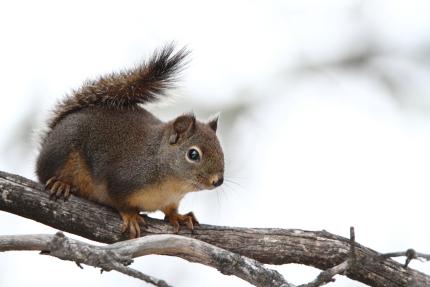
Make a poster that shows wildlife or the habitat in your area. You can make a drawing of the landscape around you and the animals that visit, or a nearby park or other green space. You could cut out images in a magazine or newspaper of plants, landscapes, and animals that remind you of your area. You could collect a small amount of fallen leaves, flowers, or other natural elements to paste onto your poster.
Add a title or a saying to your poster that reflects how you feel about wildlife, nature, or being outdoors, such as:
- Wildlife habitat supports all life
- Habitat is the key to healthy wildlife
- I’m connected to nature!
- I can coexist with wildlife!
Make a “wild” corner
Do birds like freshly mowed grass and perfectly trimmed shrubs and hedges, or do you think they prefer things more natural? Ask permission from your adults to let a corner of your outdoor space or container garden “go wild” for wildlife. Any size space will do, but if you have the option, find a space in a sunny area. If the space currently has a lawn, remove the grass so that the soil is bare. You can then let that space develop naturally.
The area will change over the seasons, usually with different types of weeds or plants that have seeds that will be eaten by birds and insects. Or you can plant native seeds like local grasses or flowers and see what grows. Part of letting the area “go wild” means leaving any leaves, sticks or dead flowers be, instead of removing them. Many insects, small mammals and amphibians use these fallen items in the fall, winter, and spring for warmth or shelter.
Once plants begin to grow in your area, you shouldn’t have to do anything to care for it. Either simply watch the birds and other animals and see which part of your space they like best (is it the new “wild” area or the other more trimmed places?) or start a journal and record what you see happening in your space each month and note what changes occur throughout the year.
Plant a native tree for biodiversity
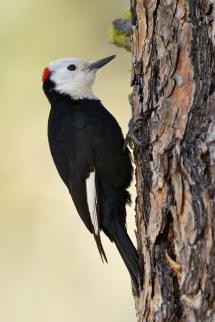
Trees are very important to many animals because they provide food and shelter. Sometimes the food is seeds or berries, and sometimes trees provide insects and larva eaten by birds and other animals. Native trees support the most species of wildlife because they have evolved with our local wildlife for such a long time and are therefore best suited to support our wildlife’s needs.
Find a place in your yard or community where you have permission to plant and care for a tree. Pick a tree based on how tall it will grow and the amount of sun your spot usually gets. Remember that trees live a long time, and some grow bigger than others, so you will need to find a spot that has enough room for the tree once it is full grown. Trees need shrubs and other plants under them to grow the best and to provide shelter for birds that stay near the ground. If possible, find some shrubs that will grow well under your new tree.
Be sure to work with others to choose a tree, prepare your spot, and plant and care for your tree. Planting a tree helps wildlife and it helps people too! Trees provide oxygen and help keep the air clean. They also protect us from the sun and keep our towns and cities cool in the summer. Be sure your tree gets plenty of water the first year it is in the ground, then sit back and enjoy the wildlife that comes to live in and around your tree.
Identify five birds near you
Learn to identify at least five different types of birds that live in your area. For each bird, learn the following information by looking it up online or finding a book at your local library:
- During which seasons of the year does the bird live in your area?
- In what other areas of the United States is the bird found?
- Where does this bird like to build its nests and how many eggs do they usually lay?
- Which foods does this bird like to eat? Do they eat the same foods in every season?
- Does this bird have any special adaptations that help it survive?
- Does this bird have any behaviors that you find interesting?
Bird feeder experiment
Does the type of bird feeder you use affect the kinds of birds that visit the feeder? If you have the capacity, you can make your own experiment by putting up different kinds of bird feeders in different places in your space and recording which birds visit which feeders. You can make your own feeders or buy them at a store. Try feeders that look very different from one another; one might be a large tray while another could look like a tube or be small with lots of perches sticking out of it. You could also experiment with placement by hanging them from a tree versus a post or setting one in an open area and one in or among lots of trees.

It's important that you keep a record of the birds that use each feeder. Make sure you record all the feeders for the same amount of time. Use a special notebook for your experiment so you can always find your notes. After making observations for at least 10 days, look at what you have learned and create a summary or short report of what you discovered. Based on what you find, what kind of bird feeder would you recommend for people in your community? How could you share your learnings with your neighbors?
Make a brush, rock, or stick pile for animals
Some birds like to nest on the ground. Amphibians, insects, and some small animals also make their homes in the natural debris in our environment, such as leaves, rocks, or stick piles. Animals often need dense brush of all kinds for protection from predators. A grass lawn does not give them anywhere to hide, or any materials to use for insulation. To help these animals, find a place then get permission to build a dense pile of brush for wildlife.
Before you add your brush put some large rocks or logs in the middle of the pile so the rain and winds can’t push your pile down too far. Brush can be anything from fallen leaves, twigs, and sticks to dried flowers and grasses. Arrange the pile so there are lots of openings and space for wildlife to live. After your pile is built, leave it be. Let the animals rearrange and use the brush as they need. Don’t disturb the pile, as you might frighten the wildlife into leaving it to find a quieter place.
Protect a snag
Cavity-nesting birds and bats can run into problems in places where people live. Often people cut down the large, dead trees, known and snags, that are best for making cavities. Therefore, cavity nesting birds usually have a hard time finding a good place to nest in cities and towns. Some common cavity-nesting birds that are likely found in your area include chickadees, wrens, swallows, woodpeckers, and some owls.
Build a bird or bat house
Does your neighborhood have large trees where birds or bats can make or find a cavity? If not, you can make a nest box for them instead. We have several nest box building plans on our woodworking projects page. You can learn more about nest boxes, placement, and maintenance on our Creating Songbird Habitat page. You can find bat house plans and information about installation on our Creating Bat Habitat page.
Image
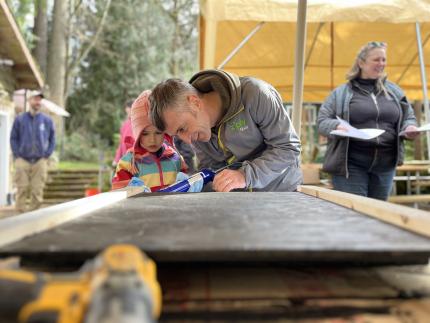
| Image
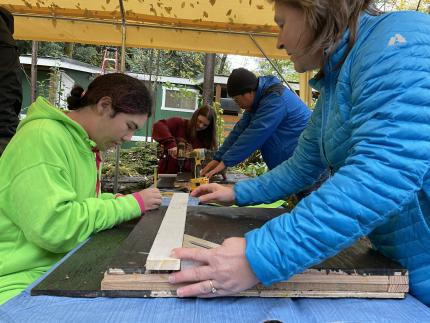
|
Write a story or poem about local wildlife
Write a story or create a poem about the wildlife you see and enjoy around your community. You can write about a real experience, or you can pretend you are one of the animals and write a story from their point of view! From deer to raccoon, bats to moths, there are so many stories waiting to be told about the wildlife that live in our cities, towns, and neighborhoods. How would you describe your life in a park if you were a robin? How about the underground journey of a mole, or the trek of a garter snake?
Include in your story why wildlife is important to you, your community, or in the world, and why other people should care about them too. If you want, include photos you have taken or a picture you draw.
Keep a nature journal
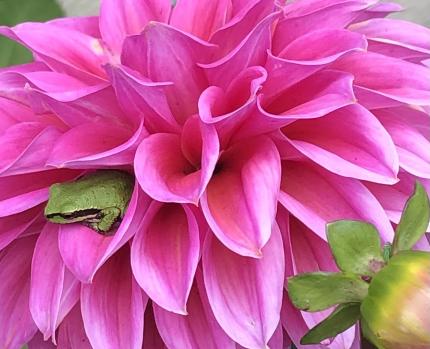
Many biologists and habitat managers keep a diary or journal about the things they observe. By doing this they can see and learn things that other people might miss. These diaries help them remember things that happen, even a long time later. By keeping a nature journal, you can start to notice patterns in the outdoor places you visit, like what time of year you see certain animals, or the changes in the flowers and plants near where you live.
Journals are good for more than just writing. You can use a journal to capture drawings, sounds, colors, and all sorts of other things. You use all your senses to “see” nature and use your journal to record them in any way that feels best for you. Change it up every day if you want to!
A great way to get started is with a five-minute nature sit. Take your journal, a pen, and a timer outside with you and find a comfortable place to sit. Leave your journal closed and set the timer for five minutes. Just sit for your first five minutes, spending about a minute focused on each of our senses: what do you see, hear, feel, smell? After the timer ends, spend the next five minutes writing about what you noticed.
Plant a hummingbird garden
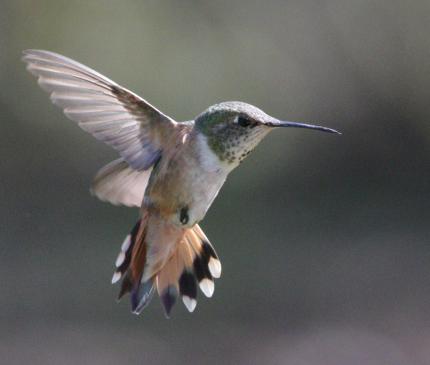
Many people like to watch hummingbirds. They are so small and fast that they amaze everyone. Their heart beats 500 times each minute! How fast does yours beat? They flap their wings 50 times a second. Try doing that with your arms!
Some people put out hummingbird feeders with sugar water for these birds. The sugar water tastes like the nectar that hummingbirds get from flowers but does not have the same nutrition in it. You have probably learned that too much sugar in candy or soda isn’t good for you, and it isn’t good for hummingbirds either! Hummingbirds need to eat insects to maintain a healthy diet. Since hummingbird feeders don’t attract very many insects, planting flowers helps hummingbirds eat a balance meal.
If you have a sunny spot in your yard, or on a patio, balcony, or front steps you can create a hummingbird garden using either a spot in the ground or by planting in two or three containers of different sizes. Get an adult’s help to pick the right spot and find some planting pots or containers if you need them. Your local gardening center should have the plants on this list, though you may have to wait for the right time of year.
You can also start your garden from seeds purchased online or by requesting a Native Wildflower Seed Packet from your local WDFW office.
Winter taste test experiment
Do you have a favorite fruit? Vegetable? Ice cream flavor? Just like people have favorite foods, many birds prefer one type of seed or nut over another. Scientists do “taste tests” by giving birds a variety of seeds to choose from. They set out seeds in separate groups, then watch and record which type of bird goes to which group of seeds. Here’s how to make your own:
- At a feed or pet store, get a few different types of seeds for your test. Alternatively, you can get a mixed seed bag and spend a few minutes separately the seeds and nuts into piles for your test.
- Place the separated seeds into containers (tuna fish cans work well, or something similar). Place the cans on a wide board, or large piece of cardboard and place them outdoors in an open area. Be sure to either label the can so you know which one holds which seeds or make a record of the can order so you still know which one had what in it after they are emptied by the birds.
- Watch the cans and see how long it takes for the birds to find them. Then observe which cans are emptied first, which tells you what seed the birds liked best. Watch the different species carefully. Do all the species prefer the same seeds?
- It's important to keep a good record of your experiment in a dairy or journal. Number the cans and use a notebook to record which types of seeds you used. Be sure to include the date, weather conditions, and any other observations you made during your study.
- The best time to conduct this experiment is during the winter. Winter is the best time to put bird feeders outside for birds because they have fewer food options in nature, and there is fewer other wildlife out and active that might disrupt your taste test (like squirrels). After you finish, put together a summary of what you learned that you could share with friends and neighbors.
Neighborhood scavenger hunt
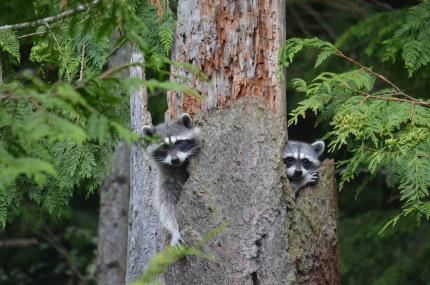
Some birds and wildlife need more space than just one property can provide. They may use your whole neighborhood to find the food, water, shelter and space they need to survive. Imagine you were an animal living in your neighborhood. Where can wildlife find these things in your community? Do your neighbors have trees and shrubs used by wildlife? Do they have bird feeders or bird and bat houses? Are there parks or vacant lots in your area? How about forested areas? Or a stream, pond, or wetland?
Survey your neighborhood for the things used by wildlife to survive. Be sure to get permission from your adult before you go; and they may choose to come with you. Decide how big an area you want to survey. Then decide on the things you are going to look for and figure out how you want to record your observations.
You can do this survey by walking down the sidewalk and writing down all the wildlife resources you find. A wildlife resource is something that wildlife might use to survive, like a food or water source, a place to sleep, materials for building a nest, and more. Talk with community members about what plants they have, if they have feeders or bird and bat houses. Be sure to look both high (in and above trees) and low (in grasses and leaves) for wildlife resources as our animals use different parts of the landscape differently.
When you are done, make a map that shows the wildlife resources in your neighborhood. Is your area a good place for wildlife? What makes it good? What might make your area a challenging place for wildlife to live? What can you do to make it a better place for wildlife?
Things to find in your survey: Tall trees, groups of trees, dead tree (snag), vacant lot, natural park, stream, pond, wetland, lake, nest or tree cavity, bramble patches, greenspace, flowers, bushes with berries or seeds, bird seed feeder, bird house, bat house, hummingbird feeder, water source, rock pile, rock wall, dense shrubs.
Download and print this neighborhood scavenger hunt.
Make a puddling or basking area for butterflies
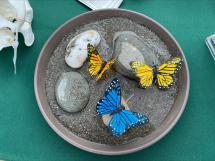
Butterflies need water in addition to nectar and often get trace minerals from water found in wet sand or soil. You can intentionally provide water but digging out a small damp spot 2”-3” deep and 24” wide in a frequently watered area.
Make a puddling area on a balcony, windowsill, or deck with a shallow container like the bottom part of a planting pot or a container lid. Fill the shallow dish with wet sand. Place it in an open area or near bright colored flower to attract butterflies. Keep the sand moist but not drenched in water. This is a great way to observe butterflies in any size space.
Butterflies warm their blood and flight muscles by basking with their wings open and bodies perpendicular to the sun. Place a few stones or rocks facing south to create butterfly basking sites. Place the stones in a garden with flowers or near potted plants. Make sure the stones are in the sun as much of the day as possible.
Make a moth sheet
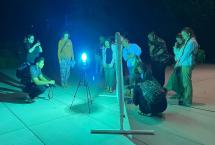
Moths are an important part of the biodiversity of our state. They pollinate many of our state’s plants and flowers, while caterpillars are essential food source for songbirds and their babies.
You can experience moths at home by making a moth observation sheet. Hang a white sheet on a line or the side of a building after dark, then shine the light on it. Wait for the moths to come to your light so you can observe, identify, and photograph them!
Listen for wildlife alert calls
Chick-a-dee-dee-dee! Did you know that this signature call from a black-capped chickadee works as an alert to warn wildlife that a predator is nearby? These small songbirds have an incredibly sophisticated signaling system that can communicate size, speed, type, and degree of the incoming threat.
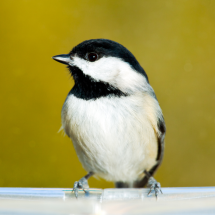
The more “dee-dees” in the call, the more danger. More than 50 species of birds and small mammals are known to pick up and repeat the chickadee's alert, creating an alarm call network warning of approaching dangers.
Alert calls can be a great cue for spotting wildlife near you. Not only can you spot the alerting animal, but the approaching predator too. You may spot a bird of prey circling overhead, or an animal on the prowl. Or, wildlife might be warning each other about you or your pet!
* This content was originally published in the At Home Activities booklet by Stephen Penland, Urban Wildlife Department, a part of Washington Department of Fish and Wildlife.
Volunteer for conservation
The Department helps folks of all ages learn more about the outdoors in Washington State, and you can join in on the fun!
Volunteer opportunities could include urban habitat restoration projects, tabling at public events, talking with people about wildlife watching, coexistence, animal behavior, Habitat at Home and more; or assisting with environmental education at libraries and public talks.
Join CERVIS to be alerted about volunteer opportunities in your area! Opportunities focused on Habitat at Home will primarily be in Western Washington along the Interstate 5 corridor with plans to expand across the state in the future. We expect to have opportunities both during the week and on weekends. Volunteers must be at least 18 years old.
We welcome volunteers of all abilities and experience levels. For more information about the volunteer program and upcoming volunteer opportunities, visit the WDFW volunteer webpage.

Statewide resources
- Washington Native Plant Society: Find a local chapter
- WNPS Native Plant Directory
- Washington County Conservation District Guide
- Washington State Conservation Commission Grants
- Washington State Noxious Weed Council County directory
- All About Invasive Weeds
- Washington Audubon Chapters
- Center for Natural Lands Management seed store
- Native Seed Network